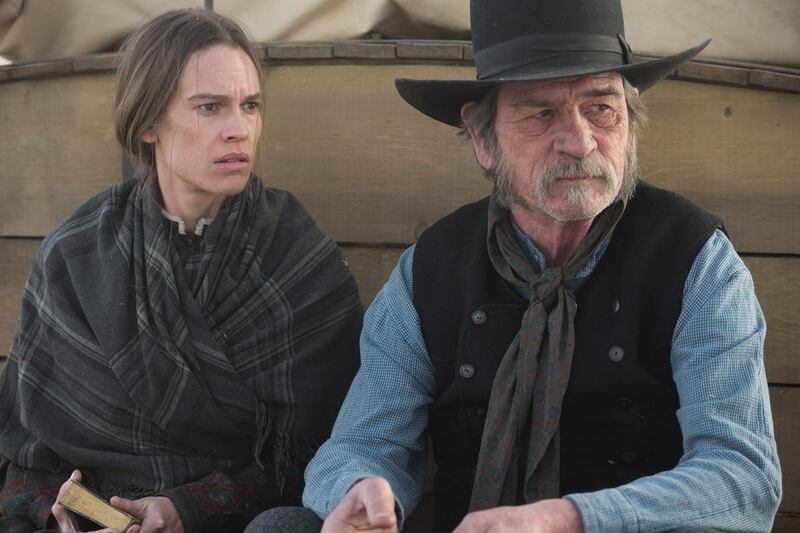The Homesman
Director: Tommy Lee Jones
Starring: Tommy Lee Jones, Hilary Swank, Meryl Streep, John Lithgow, James Spader
Three stars
"There's been some trouble about the women hereabouts," says John Lithgow's preacher in The Homesman, which was directed by and stars Tommy Lee Jones.
The hereabouts is a tiny, hardscrabble settlement in the Nebraska Territory, some time around 1860. On the desolate prairie, a handful of hardened settlers try to eke out an existence and coax life from the dry land. Going west never seemed more questionable.
The directional movement of The Homesman, however, is east. When three of the town's women (Miranda Otto, Grace Gummer and Sonja Richter) lose their minds, it's decided that they must be taken to a church in Iowa, across the Missouri River. Each driven insane – one by the death of a child from diphtheria, another by sexual assaults by a cruel husband, all three by the acrid isolation — they are the seldom-seen victims of the male pioneers who are usually glorified in Westerns, collateral damage to an ill-conceived manifest destiny.
The town’s men (Jesse Plemons, William Fitchner, David Dencik) aren’t up for the month-long journey to Iowa by wagon, so the task falls to the sturdiest resident, Mary Bee Cuddy (Hilary Swank).
She lives “uncommonly alone,” says Mary Bee, with a twinge of shame, fastidiously running her farmstead. When she proposes to a potential mate, the dim-witted man turns her down, saying he’ll head back east to find a wife – and besides, she’s too plain and too bossy.
But the dutiful Christian upholder-of-decency, Mary Bee is, as the minister says, “as good a man as any”. The carpenter who crafts the jail-like cell, fitted with chains to restrain the troubled women during their journey, tells her: “People like to talk about death and taxes, but when it comes to crazy, they stay hushed up.”
The Homesman is about citizenship. It's a Western parable, told with handsome John Ford classicism, about how we care for our ill, our mad and our dead.
Mary Bee’s companion on the journey is no upstanding citizen. She takes on George Briggs (Jones), a man due to be hanged for squatting on another man’s ranch. Our first encounter with him is when he is smoked out of a cabin, his face cartoonishly black from an explosion, rolling around in his long johns.
It's an entrance that doesn't jibe with the rest of the film, but, then again, Jones seems to thrive on an unbalanced, mordant tragicomedy. His good first directorial effort, The Three Burials of Melquiades Estrada, set up a confrontation between a border patrolman and a rancher bent on burying his friend in Mexico, before the patrolman went off to Disneyland. The movie, freed of its schematic plot, went somewhere else, somewhere deeper.
In The Homesman, Mary Bee and George travel across the plains, a pious spinster and an ornery rascal towing madness across the dangerous open range.
Jones, a devoted fan of Cormac McCarthy (whose work he adapted for the HBO film The Sunset Limited), takes after the novelist's pursuit of bleak, merciless poetry down North American pathways.
In The Homesman, adapted from the 1988 novel by the Arizona writer Glendon Swarthout, the melancholic balance isn't always quite right and the momentum wanes when it should be gaining.
Most troublesome is the handling of Mary Bee's fate, a conclusion at odds with Swank's excellent, sturdy performance. As in The Three Burials of Melquiades Estrada, The Homesman goes off its rails, with detours both exciting and frustrating.





